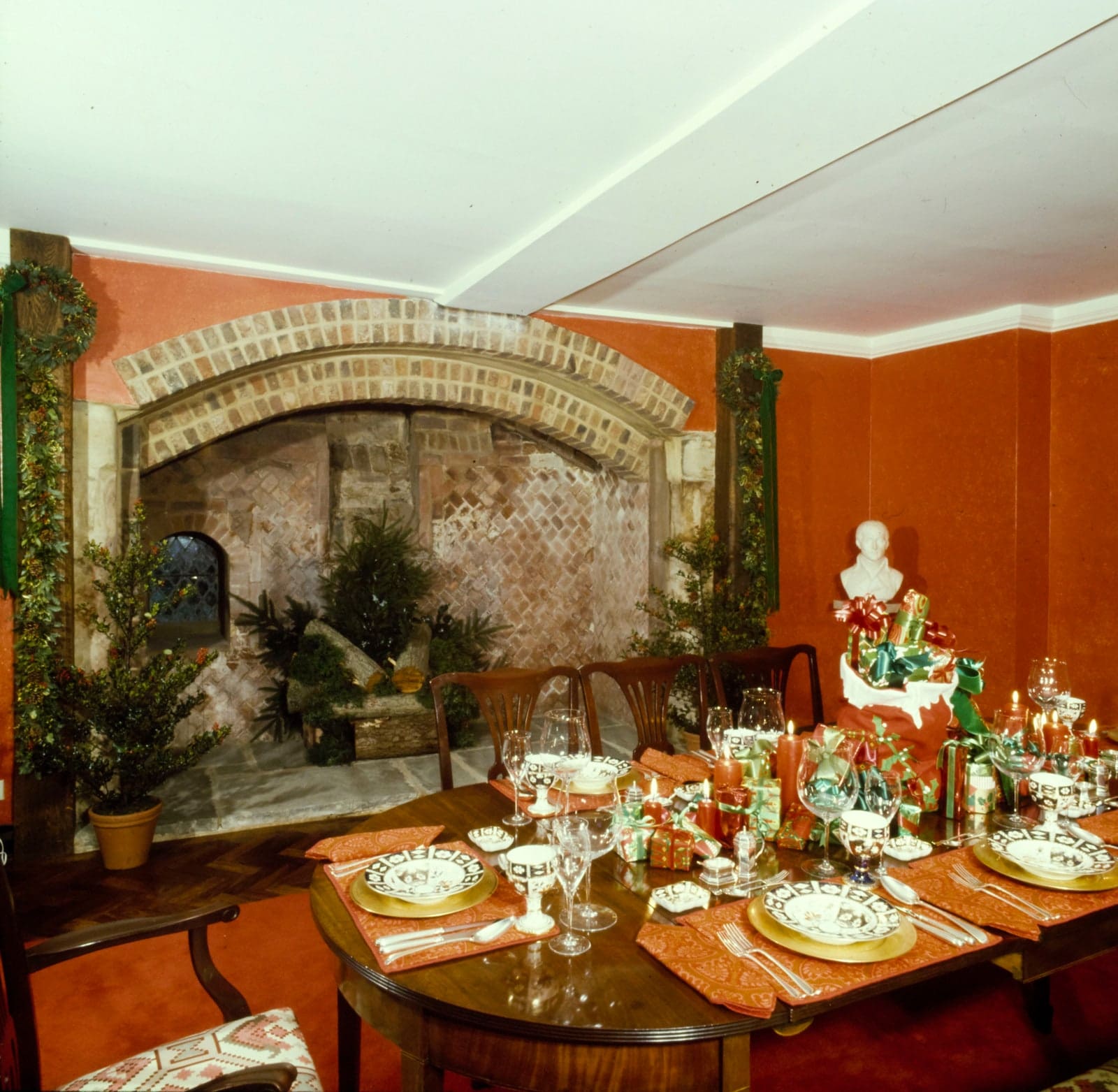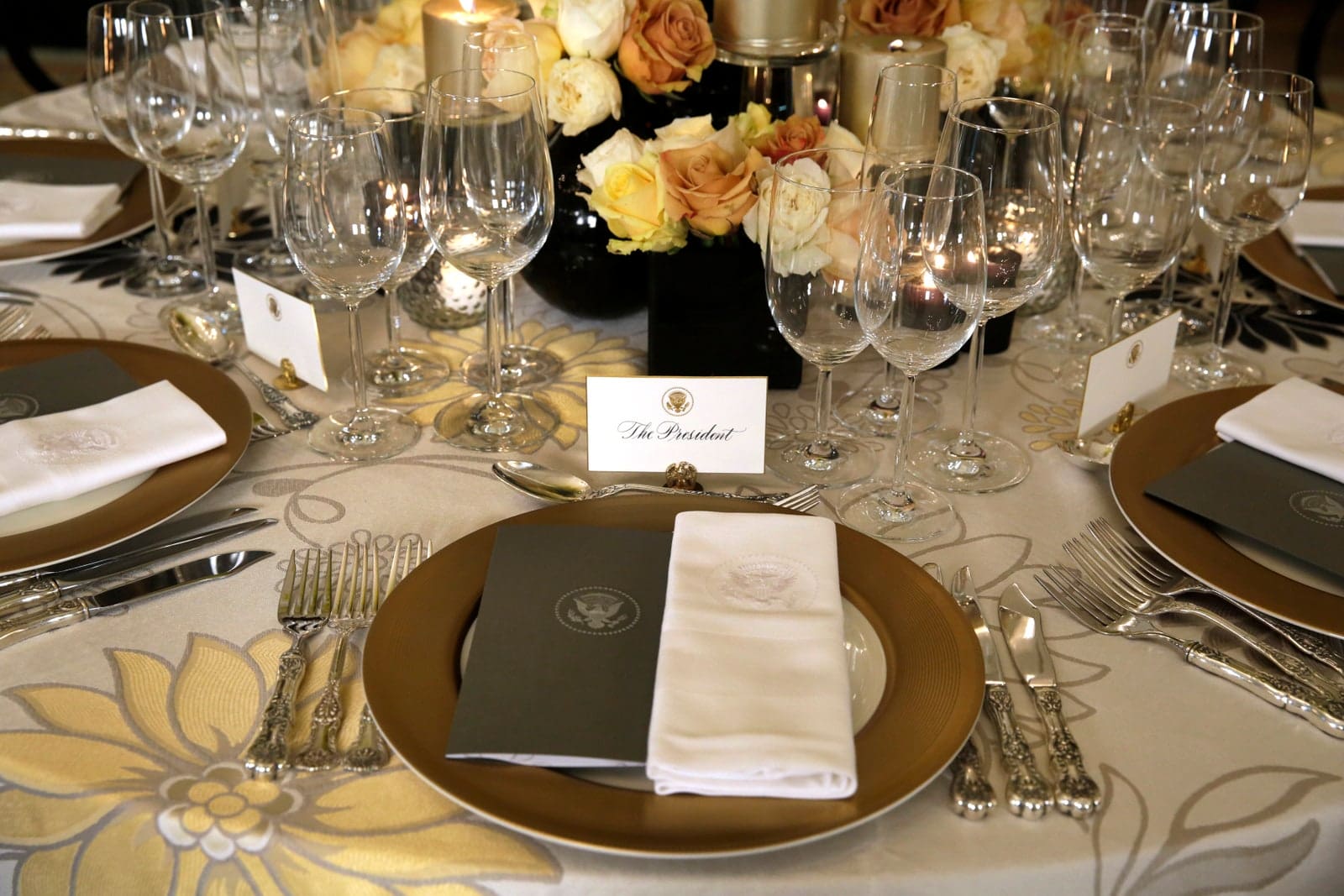Photographed by Borgy Angeles.
Have you ever wondered how to set a table? The holidays are here, and with it, dinner parties as well as formal family meals that finally put grandma’s silver to use. Laying them out, however, can be a confusing task: what utensils to use, and which order to place them in, depends on everything from the style of the event to how many courses you’re having. (A general rule of thumb? Every utensil put on the table should be used—so you can skip the spoon—and set in order of use, from the outside in.)
With these questions in mind, Vogue’s compiled a handy guide—with photo examples—on how to properly set a table, whether you are having a casual weekday meal or a fancy Christmas feast.
Casual Place Settings

You’ll need: napkin, fork, placemat, plate, knife, spoon (if required), glass
For everyday weekday meals or laidback family-style dinners with just one course, only the basics are necessary: a forks, a knife, a napkin, a plate, and a glass. First, put your plate in the middle. Then, the napkin and fork to the left (the napkin should go to the left, or under, the fork.) The knife goes to the right—and facing—the plate. If a spoon is required, it goes to the right of the knife. Meanwhile, the glass goes above the knife.
Confused? Here’s a tale this writer made up as a child: the fork is a gallant knight that must cross a round lake (the plate) to rescue his love, the spoon, who is guarded with a fiercely sharp object (the knife.) Or, just look at the photo above.
Informal Place Settings

You’ll need: napkin, napkin ring, salad/appetizer fork, dinner fork, placemat, plate, dinner knife, appetizer knife (if needed), spoon (if needed), bread plate, butter knife, white wine glass, red wine glass, and water glass
The “informal” place setting is the correct one for a standard three-course meal (and the one you most often see at restaurants). If a casual dinner requires one of each utensil, an informal place setting requires two of each: the shorter salad or appetizer fork goes to the left of the dinner fork and before the napkin. If an appetizer knife is required, put it to the right of the dinner knife. A spoon, if necessary, is placed behind both of them on the far right. Remember, put them in order of eating. “We like the method of placing the flat silver in the order of its use,” says Tiffany’s Table Book of Manners. “You take the piece on the outside.”
Now, onto the glasses. You traditionally have three: one for water, one for white wine, and one for red. Place them above the knives and spoons, with your wine glasses roughly stacked parallel to the spoon.
Then, there’s the bread plate, which should be placed above the forks. Confused if you did it right? This writer’s father, a manners stickler, says remember B.M.W.—or bread, meal, water.
Oftentimes, napkins are put into a napkin ring, or under the silverware. Occasionally, they are even presented on the plate themselves.
Occasionally, a dessert spoon and fork are placed above the plate, in between the bread plate and the water glasses. However, in modern times, the entire setting is often cleared before the second course, with fresh silverware coming out with the plates for the third.
Formal Place Settings

You’ll need: napkin, napkin ring, salad/appetizer fork, dinner fork, placemat, plate, dinner knife, appetizer knife, spoon, bread plate, butter knife, white wine glass, red wine glass, and water glass
Formal place settings are used for meals longer than three courses. There’s no definitive guide to formal place settings, as it often depends on what’s being served. “There are many many variations that a multi-course meal could have when it comes to the setting,” explains Emily Post. “Soup may be served in between a salad and main course, which would move the spoon between the two knives, there could be a soup course and a palette cleansing mint sorbet course which would mean using two spoons, or having spoons brought out for these courses.”
If you’re attempting this setting, this writer advises consulting the menu, and then setting the utensils in the order of use. Again, the first piece of cutlery used should be placed on the farthest outside.
In this case, we will stick to the classic formal courses outlined in Tiffany’s Table Manners For Teenagers: soup, fish, meat, salad, and dessert, which are served in that order. (If a casual setting requires one of each utensil and an informal two, a formal setting will require three.)
To the left of the plate, from left to right, are the fish fork, entree fork, and then the salad fork. To the right of the plate, from right to left, salad knife, entree knife, fish knife, and spoon. Wine, water glasses, and champagne glasses are arranged above the knives. A napkin with a napkin holder should be to the left of the forks, while a bread plate goes above the forks, with the butter knife laid across the plate.
With so many courses, multiple dishes will be used. Therefore, a charger plate is necessary as a base component. As the courses progress, meal plates will be placed upon the charger.
This article was originally published on Vogue.com.
